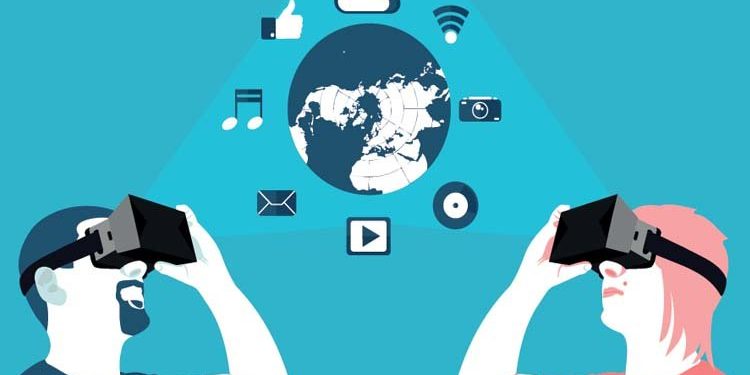We’ve talked in the past about how Virtual Reality will become apart of our daily lives in the future here. But what about the technology that is available today that can push our current experiences to the next level? For some of this, we need to take a quick trip across the pond, to take some notes on a little country pushing the boundaries of VR everyday.
If you guessed China, you would be correct. China is currently the number one country pushing VR to its limits. That’s not to say that the rest of the world isn’t developing, but China definitely has the largest percentage of VR products for the consumer market. Everything from custom created experiences to match custom made hardware. Just to give you some perspective, China is expected to have shipped over 20 million headsets by 2020.
However, this article is not just about China, I will also be discussing some of the technologies currently available to the rest of the world to see a bit more sophisticated developments that target more than just games.
I want to focus this article on three key points. The first being some examples of advanced technology that the world is developing for advancement of VR interaction. The second being the simpler hardware and software that China is bringing to the consumer market. And the third is how China has upped the ante with it’s ¥3B (~$620M) Virtual Reality Theme Park.
Before we dive into it, if you’re curious about VR and haven’t tried it yet, consider having your next Corporate Event in the virtual world and see why everyone is talking about this amazing technology!
VR Haptics
First things first, let’s talk about one of the coolest promises for VR haptics right now, the Teslasuit. If Iron Man could make a VR suit, this is how it would look. It’s a very polished, very sleek looking suit with a lot of promise. It’s as thin as a wetsuit, has full haptic sensors all over the body and climate control, as well as native tracking built in. That all sounds amazing, however this is still in development and I’m sure it’s very expensive. As it currently stands, having VR Haptics is going to enhance your experience beyond just seeing the game, you’ll be feeling it, living it.
But the Teslasuit is still quite a few years out, so let’s talk about two products you can buy today: Hardlight Suit and the Subpack. The Hardlight suit is taking a simpler approach to the Teslasuit and making a simpler vest that you can strap on and off relatively easy. It has big, bulky feedback sensors, but it’s simple. There are already games that support it and it is much less expensive. The only issue is that it is still on pre-order through kickstarter, so once it’s fully released, then we will see.
What about today? You have VR kit and you want to buy something today? Well Subpac is basically your cheapest and only option. Subpac is a slim vest that wasn’t designed for VR but rather for music. To be able to feel the vibrations and feedback from the beats is something very cool. However, that translates perfectly to VR gaming where if you get shot, you want your chest to vibrate. Although the other two options I mentioned before will be better and more precise, at least you can buy the Subpac right now and it will get you most of the way to a great experience.
VR Simulators
Okay, so now we’re taking it up a notch. Now you understand how haptics can increase a VR experience, but that’s mostly for standing games. What about every other type of game? China has the answer to that right now and it’s in the form of Virtual Reality simulators.
These are actual machines and contraptions that are built for you to stand on, sit on or get in and the experience will physically move you. Whether it’s sitting on an actual motorcycle that will allow you to control your motorcycle in the game or a full on spinning capsule to imitate a roller coaster, these are all machines that exist and China is making so many kinds. Without going into detail, China already has so many of these solutions to offer such as full suspended walking rigs, gun models, race cars, horse riding, seated pods, multiplayer arena’, and even flight simulators. This is all thanks to China’s mass push to get VR into the mainstream market. They are creating experiences directly for this hardware as well, so it’s not just a simulator, it comes with a full game to play, arcade-style. That brings us perfectly to our next subject.
Oriental Science Fiction Valley
This monstrous 330-acre (134-hectare) Virtual Reality theme park in the southwestern Guizhou province cost nearly ¥3B (~$620M) to build and is home to 15 giant halls, each with their own themed attractions. Every theme you can think of is here from Star Wars in Hall 1 to the Constellation Amusement section in Hall 8 all the way to the Deep Sea in Hall 12 or even to the Alien Battlefield in Hall 13. Prices for the day are only $30-$60(¥150-300).

This is absolutely taking it to the next level with VR! Without a doubt this puts China on the map as the first country to take a leap in VR development as open to the public as they have. This shows that VR is the future and has the potential to show the rest of the world that China is here to play.
This article was a bit all over the map as there was a lot to talk about. I can dive deeper into each of these topics a little more but as of right now I’ll leave it at that. Virtual Reality is the future of tech and these are definitely some of the best entertainment uses for VR right now.







